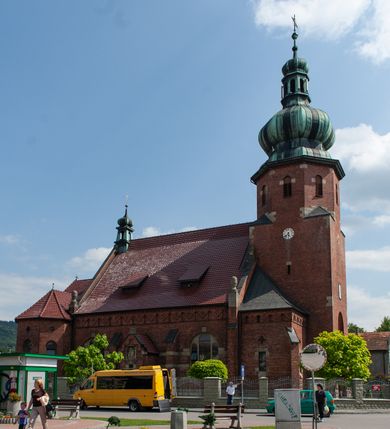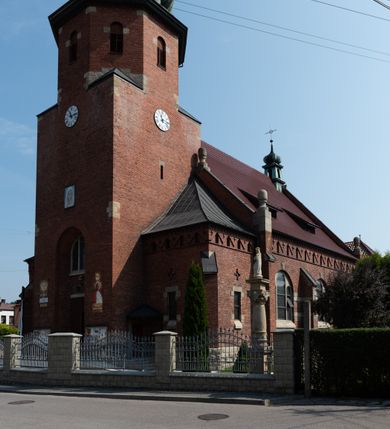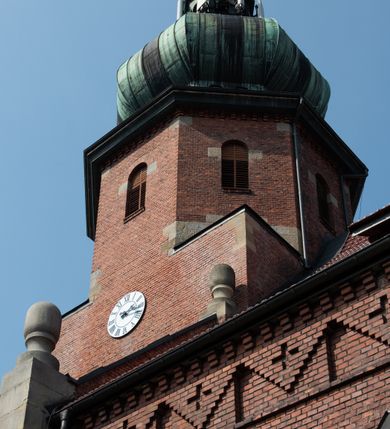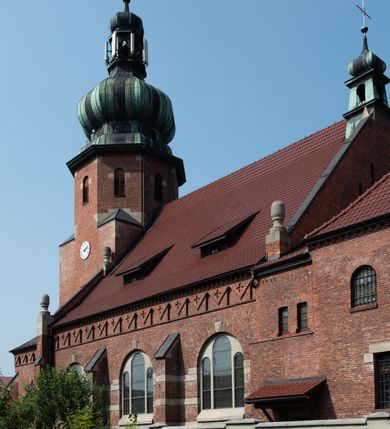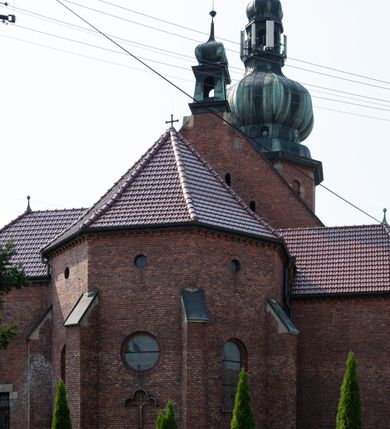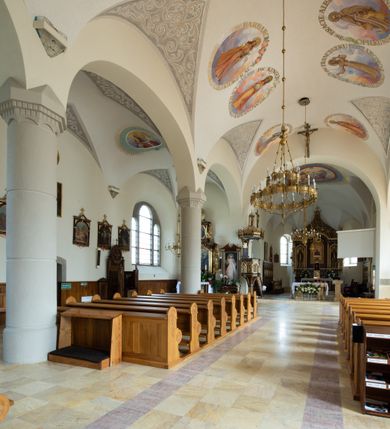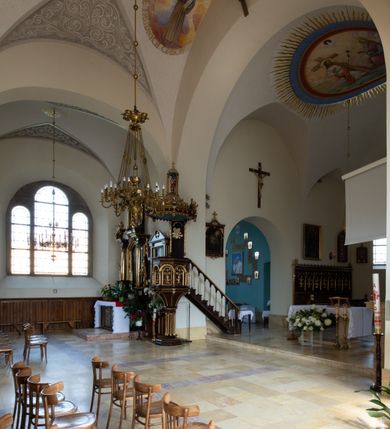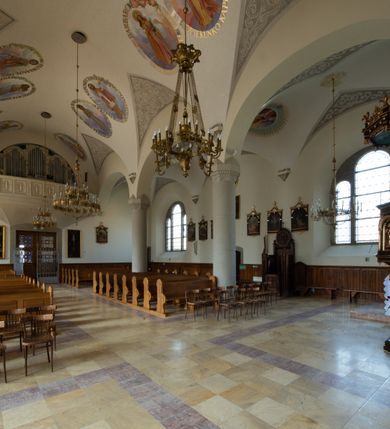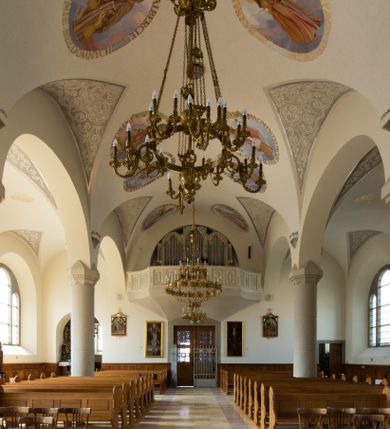
Church of the Nativity of St. John the Baptist in Zembrzyce
History of work
The first church in Zembrzyce was founded in 1531 by Jan Zembrzycki. From the act of episcopal visitation from 1598 we learn that it was a small, wooden church, equipped with three altars. It didn't have a belfry, it wasn't built until the 18th century. The temple contained a precious relic of the crown of Christ, which, however, disappeared in unknown circumstances. When discussing the history of the first temple in Zembrzyce, it is worth highlighting the mention of the high altar, included by Andrzej Komoniecki in "Dziejopis Żywiec," according to which "[...] in 1542 the wood carver of Zembrzyce converted the high altar to the model of the altar of Blessed Virgin Mary in Cracow at the request of parish priest of Kaszkowica ". This information proves that woodcarving craft has been developing in Zembrzyce since the 16th century, and further notes also mention orders carried out in other places, e.g. the construction of a pulpit in the church in Żywiec in 1698 by woodcarver from Zembrzyce Błażej Zawilski, or the altar of Christ crucified in 1704 by Wojciech Gliński from Zembrzyce. In the files of the episcopal visitation from 1662, the consecration of the high altar by Bishop Mikołaj Oborski was recorded. At that time, it was mentioned for the first time that the church contains a painting of the Mother of God of Zembrzyce that was famous for miracles. On August 8, 1666, the Brotherhood of St. Scapular was founded. Another was founded in the nineteenth century: Living Rosary of the Apostolate of Prayer (1870), Archconfraternity of the Heart of Jesus (1871). The date of August 5, 1823 was particularly noted in the history of the Zembrzyce church. During the storm, the inhabitants staying then in the nearby field, took shelter under the church tower, which was struck by lightning. Seven people were killed and many were injured by dome debris. In 1896, an initiative to raise money for the construction of a new church was undertaken, which was argued by the then parish priest Stanisław Heumann "The parish church of Zembrzyce, although ancient, as existing since the first half of the 16th century and in the middle of the 17th century rebuilt and connected to the belfry, could have been enough when the number parishioners did not reach a thousand. Currently, with the increase in population, the church has proved to be too small and low. Given that it is wooden and erected in the middle it requires continuous reparations due to rotting roofing, in danger of fire it generates constant costs" Father Władysław Włodyga, who became a parish priest on 27 November 1905, was actively involved in the initiative to build a new church. Soon a committee for the construction of the church was founded, headed by head Andrzej Kopacz. In 1911, the old church was demolished, and already on February 2, 1913 a new church was consecrated, which was created according to the design of the Krakow architect Franciszek Mączyński. The "Korn" company from Bielsko dealt with the work. The construction of a new church is associated with a local story, according to which older residents of Zembrzyce did not want the temple to be built in a new place, located on a hill, which they would not be able to climb. So they persuaded their sons to bear the wood needed for construction from the hill at night and lay it next to the place where the old church stood. The builders found this event to be a miracle and eventually decided to build a church in its former place. In the years 1921-1922, despite the difficult economic situation, began to equip the new temple. Pews were made from the oak wood collected from a dismantled church. Originally, the high altar was to be made by a carpenter named Kowol from Zakopane, with whom a contract for performance of work was signed in October 1919. But Kowol failed to execute the agreement. Wasn't until 1922, thanks to the additional amount donated by Jan Zawila, the altar was made by a Krakow craftsman, Franciszek Maćkowski. In the center of the altar there is a picture of Our Lady of Zembrzyce. A baptismal font from the 16th century, side altars, two crucifixes and some paintings were transferred from a former, wooden church. In the temple there are two paintings of the Virgin Mary of Zembrzyce: one from the first quarter of the 15th century and the second from 1674, decorated with a silver dress in 1889.
Abstract
The Church of the Nativity of St. John the Baptist in Zembrzyce was built by „Karl Korn” from Bielsko in 1911-1913 according to the design of Franciszek Mączyński. Karol Korn (1852-1906) was an architect and builder of Jewish origin who worked mainly in Bielsko. Despite difficult economic situation, during the years 1921-1922, the works related to equipping the new temple were started. Pews were made from the oak wood collected from a dismantled church. Originally, the high altar was to be made by a carpenter known as Kowol from Zakopane, with whom an agreement to perform the work was signed in 1919. But Kowol failed to execute the agreement. Only in 1922, thanks to additional amount donated by Jan Zawiła, the altar was built by Cracovian artisan Franciszek Maćkowski. A baptismal font from the 16th century, side altars, two crucifixes and some paintings were transferred from a former, wooden church. In the temple there are also two paintings of Madoona of Zembrzyce: the first one comes from the first quarter of the 15th century and the second one comes from 1674, which was decorated with a silver robe in 1889.
Other works of this author
Persons related to work
Other works from this place
Other works from this year
Similar works
How to cite?
Maria Działo, "Church of the Nativity of St. John the Baptist in Zembrzyce", [in:] "The Sacred Lesser Poland Heritage", 2025, source: https://sdm.upjp2.edu.pl/en/works/church-of-the-nativity-of-st-john-the-baptist-in-zembrzyce

